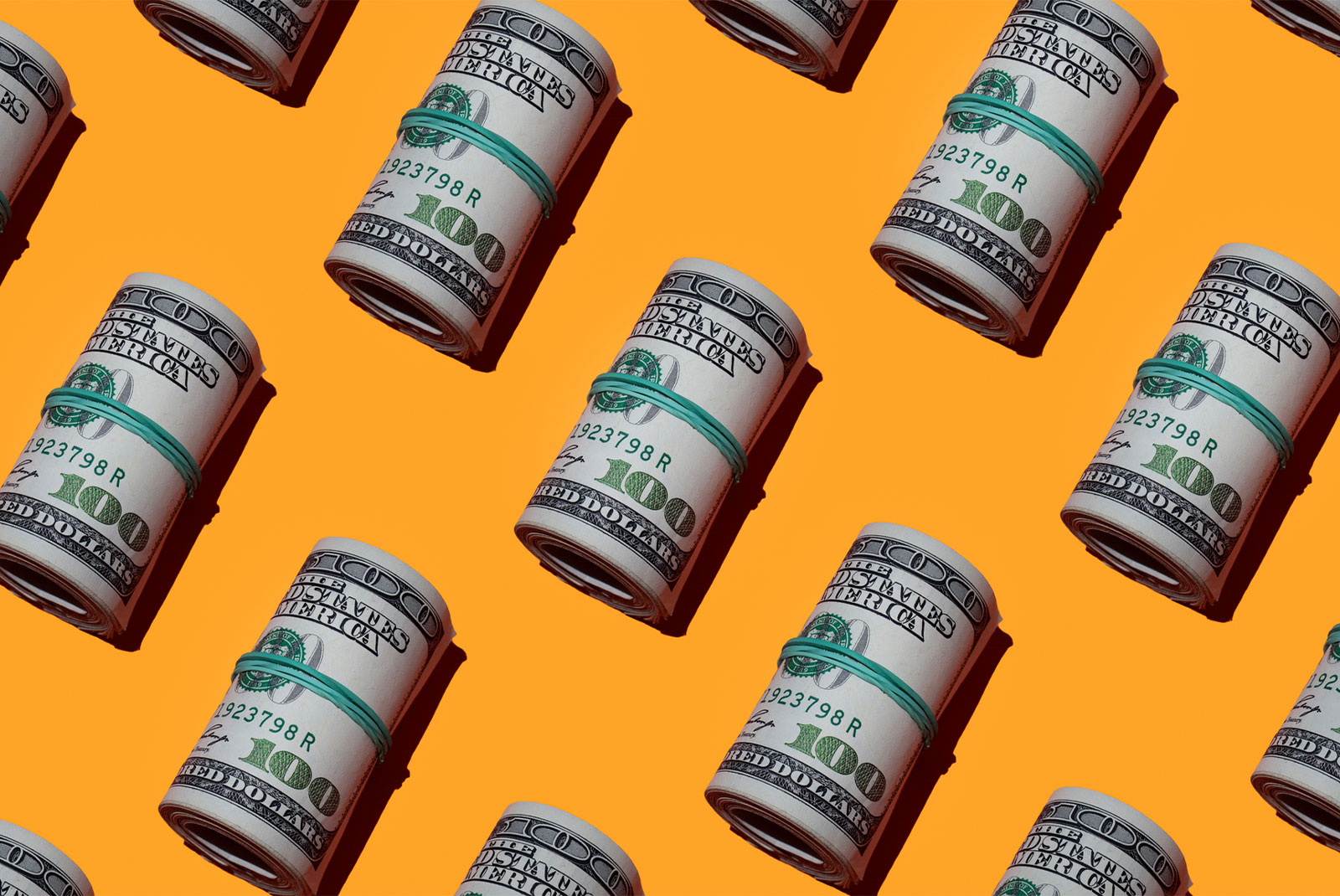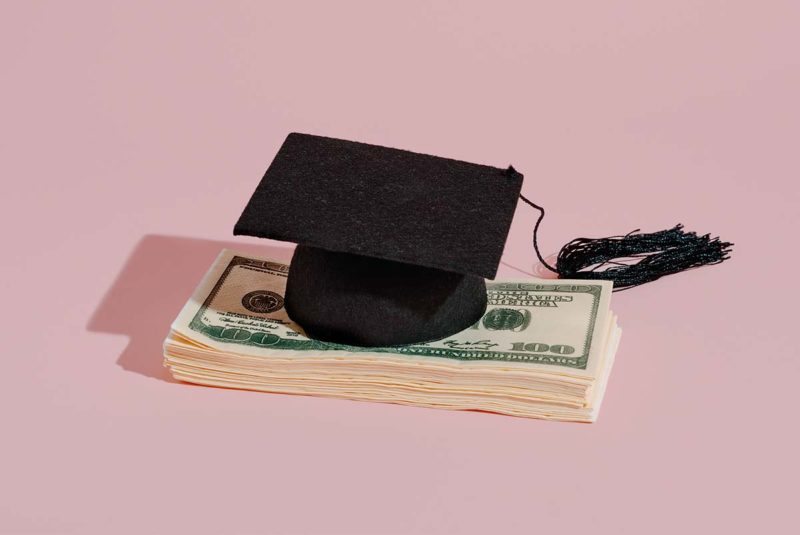You’re ready to get more education. Maybe you’re looking at a 4-year college or university. Maybe you’re looking at a community college or technical training program. Whatever you choose, education has enormous value that can help you earn more over your lifetime.
The question? How can you pay for that education?
One answer you may be considering is taking out student loans. If you do, you won’t be alone. In the U.S., approximately 42.8 million borrowers have student loan debt totaling around $1.745 trillion ($1.617 trillion of it is federal student loan debt)[1]
Taking on debt can feel overwhelming, but it doesn’t have to be. To help, we’ve created this overview of student loans for the first-time borrower. It will help you understand how student loans work, the types of loans available and what to expect when you start to repay them.
Ready? School is now in session.
How Do Student Loans Work?
Student loans are designed to help you cover the costs related to your education. An important thing to remember is that a student loan isn’t a scholarship or a gift, it’s a long-term commitment. You’ll be responsible for paying it back and it comes with real costs.
But hopefully, your education will help you increase your earning potential so you can earn more money and then be able to pay back the loan, plus interest.
How much does a student loan cost?
We’ll go into greater details about interest rates and terms shortly, but to give you a clearer picture of how student loans work, let’s say you take out $30,000 in student loans. You agree to pay them back at 4% interest over 10 years.
Once you start repaying your loan, you’ll be responsible for paying the lender $303.74 every month for the next 10 years. That’s $3,644.88 a year that you won’t be able to save, invest or spend on yourself over the next decade. And over the life of the loan, you will have paid the lender $6,448.25 in interest in addition to the $30,000 principle balance.
Who gets the student loan money?
When you get a student loan, you borrow a certain amount of money, usually when the academic year begins. The money is then disbursed (paid) to your school or you.
Student loans are usually used to cover costs like tuition, but can also pay for books, room and board and other school-related expenses. You could use the money to go to Cabo for spring break, but it probably isn’t a great idea.
Federal student loans are usually disbursed directly to the school or to your student account. Private student loans can be disbursed directly to the school or you.
So, If you’re thinking about taking out student loans, don’t wait until you’ve already started school. The application process requires planning and time, and you’ll want to submit your application well before the start of the academic year.
FAFSA deadlines can change and can also vary by state and school, so check the FAFSA deadlines page to see when your application is due.
What Types of Student Loans Are Available?
When you’re getting ready to borrow money for school, there are two types of student loans available: federal student loans and private student loans.
Federal student loans
As an undergrad or first-time borrower, you’ll first want to look at federal student loan options, specifically Direct Subsidized and Direct Unsubsidized Loans.
- Direct Subsidized Loans: Designed for students whose families can demonstrate financial need. With these loans, the government covers the interest as long as you’re a full-time or half-time student. It also covers interest for a grace-period of 6 months after you graduate or drop below half-time enrollment.
- Direct Unsubsidized Loans: Available to all student borrowers regardless of financial need. With these loans, the interest starts to accumulate while you’re in school, but you won’t have to start making payments until after your 6-month grace period.
- Direct PLUS and Parent PLUS loans: Once you’ve maxed out your direct loans, you (or your parents) may qualify for PLUS loans. Parent PLUS loans are for parents who are willing to borrow in their name to help fund their child’s education. Direct Grad PLUS loans are available for students looking for a way to fund their own graduate education.
Private student loans
The federal student loan programs come with borrowing limits. If you’ve hit those limits and still need money for school, you may want to consider private student loans. Private student loans are offered through banks, credit unions and other lenders.
How do you compare federal vs. private student loans?
Federal student loans and private student loans offer different benefits. We’ll go into more detail during the article, but here’s a quick primer to get you started.
| Federal Student Loans | Private Student Loans* | |
| When is my first payment due? | Not due until after you graduate, leave school, or change your enrollment status to less than half-time. You may also get a 6-month grace period | May be some required payments while you’re still in school, but some lenders will wait until after you graduate to begin payments |
| How much can you borrow? | The maximum amount you can borrow ranges from $5,500 to $12,500 per year, and the total maximum you can borrow ranges from $31,000 – $57,000[2] | Loan maximums are set by the lender |
| What are the Interest rates? | Fixed interest rates usually range from 4.99% – 7.54%[3] | Interest can be fixed or variable. Interest rates can be higher or lower depending on your credit score |
| Can I get a subsidized loan? | If you have financial need, you may qualify for a subsidized loan where the government pays the interest while you’re in school. | Private student loans are not subsidized. Your loans start accruing interest while you’re in school. |
| Can I consolidate or refinance my loan? | Loans can be consolidated into a Direct Consolidation Loan. | Private student loans cannot be consolidated but may be refinanced. |
What Should I Know About Student Loan Interest and Fees?
Now that we’ve covered the basics, let’s look at all the moving parts that make up a student loan. We’ll also go into the key differences between federal and private student loans.
Interest rates
One big consideration when you take out a student loan is the interest rate. This is what the lender charges you to borrow money. The higher the interest rate, the more the loan will cost you.
There are usually two types of interest rates.
- Fixed interest rate: Stays the same for the life of your loan and your monthly payments will also be fixed.
- Variable interest rate: Your interest rate can move up or down each year depending on the economy and the lender.
Federal student loans
These interest rates are set annually by the federal government and once your rate is set, it’s the interest rate for the life of the loan.
- Direct Loans: Currently 4.99% for undergraduate students
- Plus Loans: Currently 7.54%[3]
Private student loans
Because these loans are offered through private lenders, they set the terms and will usually base the interest on your credit score and credit history.
If you are just starting out and don’t have a history of paying bills, your credit score may be low (or you may not have one). So, it may make sense for a parent or other person with a better credit history to co-sign your loan or borrow on your behalf.
However, as you develop an income and credit history, your credit score should improve.
Loan maximums
Of course, lenders aren’t going to offer you unlimited money when you apply for a student loan. Knowing how much you can borrow with each type of loan could affect which loans you take out.
Federal student loans
The maximum amount you can borrow ranges from $5,500 to $12,500 per year, depending on your year in school, whether you have someone to co-sign your student loan and whether you’re considered dependent or independent. The maximum you can borrow ranges from $31,000 – $57,000 and you can only take out $23,000 in subsidized loans.[2]
Private student loans
The lender determines the amount you can borrow based on your creditworthiness. Be sure you know each lender’s loan terms and limits.
Origination fees
You may need to pay an origination fee depending on your loan. This is an upfront fee the lender charges to cover the costs of processing your student loan.
Federal student loans
The fee is deducted proportionately from each loan disbursement sent to the school. For Direct Subsidized and Unsubsidized Loans the fee is 1.057% of loan value and for Direct Plus Loans the fee is 4.228% of loan value.[3]
So if your origination fee is 1.057% on a $5,500 loan ($58.14) the school would receive $5,441.86 but you’d still owe and pay interest on the original $5,500.
Private student loans
Private lenders choose whether or not to charge an origination fee and decide how to incorporate it into your loan if they do charge the fee.
Repayment term
Your student loan repayment term is the amount of time you will take to repay the loan and will affect how much you pay each month and how much you’ll pay in interest.
Federal loans usually have a 10-year repayment period while private loans can range from 5 – 15 years.
How Do You Apply For Student Loans?
Of course, no one is just going to just give you a student loan. You’ll need to apply for it. But how you do that will depend on what type of student loan you apply for.
Federal student loans
Federal student loans have a specific process to follow.
- Fill out the Free Application for Federal Student Aid (FAFSA): The FAFSA form will ask you basic questions about your income and financial situation. It will also ask you to list the schools you are applying to. Hopefully, you’ll have a parent or other family member who can co-sign your FAFSA, but there are options if you don’t.
Based on the results of your FAFSA form, your college or career school will send you a financial aid package, which may include federal student loans. Your school will tell you how to accept all or part of the package, including the loans.
- Go through entrance counseling: Once you’ve received your offer from the school you’ll typically need to complete entrance counseling before you can accept the loan portion of your package. This is an online presentation that explains how your loan works to ensure that you understand your obligations to repay the loan. If you are borrowing a Federal Student loan for the first time, you must complete this step before you can receive the loan funding.
- Sign a Master Promissory Note: Once you’ve completed entrance counseling, you’ll sign a form showing that you agree to the terms of the loan.
Private student loans
Taking out a private student loan is similar to taking out a mortgage or personal loan. You’ll work with a bank, credit union or other lender and submit an application to them. Once you’ve done that, the lender can decide whether or not to approve your application and you and the lender will agree to loan terms.
How Does Student Loan Repayment Work?
Now that you have the money you need to get your education, you may be asking yourself, “When do I need to start repaying these loans, how much will it cost me and what happens if I can’t keep up”?
When do you have to start paying your student loans back?
Here’s the thing about loans: you have to pay them back. The question is, when?
Federal student loans
The Federal loan system gives you a break from repayments while you’re in school and also gives you a 6-month grace period starting after you graduate or when your school enrollment status changes. If you have a subsidized loan and you’re enrolled at least half-time, you won’t pay any interest on the loan while you’re in school.
Private student loans
Your lender may require you to start making payments as soon as the loan has been disbursed to either you or your school. However, some lenders may be willing to defer payments until you’re done with school, but the loans could still accumulate interest while you’re enrolled.
What happens if you can’t pay back your student loans?
When you first take out your student loan, the repayment terms should be clearly spelled out and should show you the amount of your monthly payment and the length of the loan term.
If you’re having trouble repaying your student loans, you may be at risk of defaulting. That can hurt your credit and put you in legal jeopardy as well. But the good news is that there are options to help you manage your loans before that happens.
Federal student loans
For federal student loans, you’ll usually follow the Standard Repayment Plan of 10 years or less. For private loans, the lender sets the terms and if you have a loan with a variable interest rate, you may need to be ready to pay more if the interest rate goes up.
The government offers a lot of different options to help you repay your loans. These can include extended repayment, deferment or forbearance, income-based repayment plans and loan forgiveness programs.
Private student loans
Private loans can go into default if you miss three consecutive monthly payments.[4] When that happens, private lenders may attempt to collect on your debt directly, hire collection agencies or sue you to collect. If you’re having trouble, your lender may have options to help you by adjusting your loan terms or refinancing your loan.
If you’re concerned that you won’t be able to keep up with your payments, talk to your loan servicer ASAP. Don’t wait until you default on your loan.
Is Consolidating or Refinancing Student Loans Possible?
Let’s say you’ve been paying off your student loans for a few years. Maybe you want to:
- Shorten your loan repayment period so you can pay off your loan faster or extend it so you can lower your monthly payment
- Consolidate your loans so that you only have to manage one payment each month
- Pay less in interest
You may be able to accomplish all three with a loan consolidation or refinance.
Federal student loan consolidation
If you have federal student loans, you can take out a federal Direct Consolidation Loan. This is a federal student loan that allows you to consolidate all of your federal student loans into a single loan.
Private student loan refinance
If your private loans have high interest, you could possibly refinance your loans at a lower interest rate. You can also consolidate your federal student loans and private student loans into a single private loan. This is usually advisable when you have good credit and can qualify for a lower interest rate.
Are There Alternatives to Student Loans?
Of course, borrowing money doesn’t have to be the only way to pay for school. There are lots of scholarships, grants and tuition assistance programs available. Here are several ways to find them:
- Contact the financial aid office at your prospective school
- Talk to your high school guidance counselor
- Check the U.S. Department of Labor’s FREE scholarship search tool
- Research grants available through federal agencies or your state grant agency
- Ask about grants and scholarships offered by local foundations, religious or community organizations, local businesses, or civic groups
- Research scholarships offered by professional organizations and associations related to your field of interest
- Look for grants and scholarships made available by cultural, ethnicity and other minority-based organizations
- Ask your employer or your parents’ employers if they offer tuition assistance or scholarship programs
Student Loans Don’t Have To Be Stressful
Going to school and taking out loans to pay for it can feel stressful. But it doesn’t have to be. The important thing is to plan ahead and create a strategy so you can get the maximum value from the loans that you take out, and develop a plan to pay them off when they come due.
Do that, and you’ll be able to enjoy all the benefits that you gain from your newly acquired education.
Class dismissed.
The Short Version
- When you get a student loan, you borrow a certain amount of money, usually when the academic year begins. The money is then disbursed (paid) to your school or you
- When you’re getting ready to borrow money for school, there are two types of student loans available: federal student loans and private student loans
- A student loan isn’t a scholarship or a gift, it’s a long-term commitment. You’ll be responsible for paying it back and it comes with real costs
Education Data Initiative. “Student Loan Debt Statistics [2022]: Average + Total Debt.” Retrieved March 2022 from https://educationdata.org/student-loan-debt-statistics
Federal Student Aid Information Center. “Subsidized and Unsubsidized Loans.” Retrieved March 2022 from https://studentaid.gov/understand-aid/types/loans/subsidized-unsubsidized
Federal Student Aid Information Center. “Federal Interest Rates and Fees.” Retrieved March 2022 from https://studentaid.gov/understand-aid/types/loans/interest-rates
Consumer Financial Protection Bureau. “What happens if I default on a private student loan?” Retrieved March 2022 from https://www.consumerfinance.gov/ask-cfpb/what-happens-if-i-default-on-a-private-student-loan-en-673/



